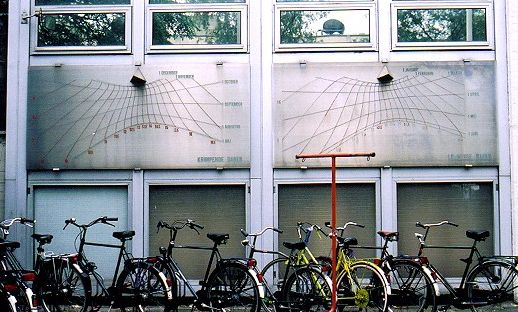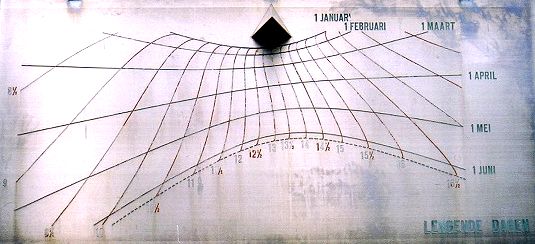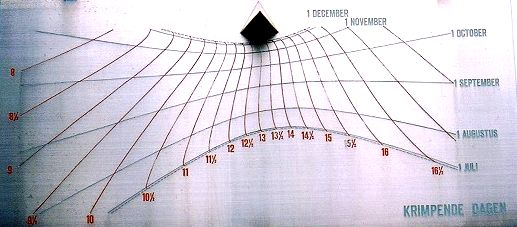
Nodal dials
Catholic University, Nijmegen

The gnomon is a tetrahedron. Note: the upper edge is NOT a pole-style; the shadow of the tip indicates the time and the date (no, not right here, ok?). The dial has analemmas per half-hour, allowing civil time (Central European Time) to be read directly. The analemmas have been split and divided over two dial plates for clarity, the one at right for the lengthening days (first half-year) and at left for the shortening days. Date lines are drawn for the first day of each month and for the solstices. The analemmas and times are in red, the date lines and dates in blue. The dial declines 9° to the west.

The dial faces have been made from stainless steel and measure 2.80 x 1.35 m (about 9 x 4½ ft). The dial for the first half-year has time lines from 8½ to 18 o'clock, of which the last three have not been marked. The date line for the winter solstice has been omitted, as it would almost coincide with the line for January 1.

The dial face for the second half-year has time lines from 8 to 17½ o'clock, of which the last two have not been marked.
The sundial is mounted next to the main entrance of the Universal Laboratory of the Faculty of Science. At least, that was how it was called when I studied here. It was the first building of the then very young faculty (founded in 1960). At first it housed all departments, but as the housing plans were being realized, it had to accommodate various groups; hence the name.
Website: University of Nijmegen
Location: 51.8° N, 5.9° E
Design: Dr. J.J. de Kort
Inauguration: July 1980